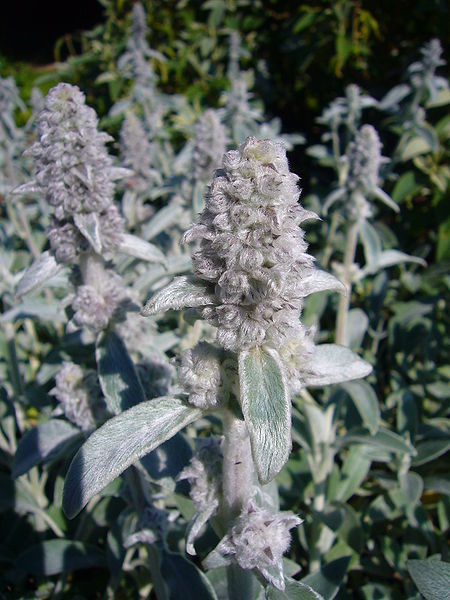 |
| Lamb's Ears |
With my Ecologic hat on, I love the idea, though I would like some more data. This 1.5 degree claim is relative to dry bare soil. But how would a roof of lamb's ears compare, for instance, with a roof covered in reflective foil to send back a fair amount of the sun's rays, reducing the 'storage heater' effect that is an urban heat island? I'd be interested to know.
Any road up, here's the press release for your delectation:
Research, to be presented this afternoon, 15th September, at an environmental conference in London, by Royal Horticultural Society (RHS) Scientist Dr Tijana Blanusa highlights the merits of certain plants in helping reduce the higher temperatures found in cities. One plant in particular, Lamb’s Ears (Stachys byzantina), which represents silvery and hairy leaved plants, may be very important in the future.
It is well recognised that air temperatures in urban areas are higher than in surrounding rural areas, a phenomenon called ‘urban heat island effect’. This increase in air temperatures is largely due to vegetation being replaced by dark and impervious surfaces.
A number of studies have shown the importance of roof vegetation in decreasing summer-time air temperatures and in counteracting urban heat island effects. They achieve this by cooling surrounding areas through evapo-transpiration, a plant’s equivalent to sweating.
The paper, presented at the World Green Roof Congress, has being produced in collaboration with researchers from the School of Biological Sciences, University of Reading.
Dr Blanusa looked at the three broad leafed perennial plants and a Sedum mix, the most popular plants for roof covers. The first year of her research showed that Lamb’s Ears (Stachys byzantina) significantly reduced the surrounding air temperature near the surface of the leaf during early afternoon on a hot summer day, by some 1.5 degrees for example when compared to the bare, dry soil.
“Green roofs are not just about looking good,” says Dr Blanusa. “There is much more interest recently in providing additional ecological and economic functions such as regulating internal building temperatures. But this research emphasises the potential in helping reducing air temperatures. If only every building had a green roof and a green wall.”
Earlier research in the UK, based on model predictions, has shown that increasing green space such as parks, gardens and green roofs by 10 per cent would reduce summer-time air temperatures by something like 4 degrees (i).
“With our climate getting warmer gardeners will be playing an even more important part in helping reduce the effects,” says Tijana. “Getting planting right in urban spaces, which as we all know can be very limited, is particularly important and can have a major effect in not only helping reduce urban temperatures but will also provide other environmental benefits.”

I'm probably being dim, here, but 'sweating' cools the body, not the surrounding air.
ReplyDeleteSpot on, Henry - I just thought 'it's biology, so I won't understand it,' and didn't read it properly.
ReplyDeleteI can only assume that since the urban heat island effect is basically a city acting as a storage heater by soaking up heat during the day and giving it off at night, the plants reducing the temperature of the roof reduce the resultant impact on the air during the darkened hours.